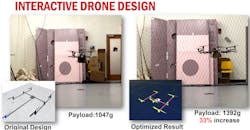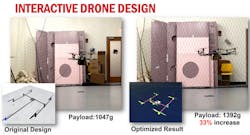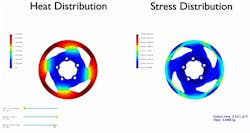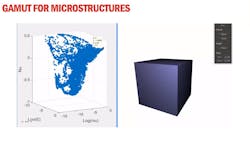Smart Manufacturing Drives New Approach to Design
With innovation, products are quickly becoming more complex, sophisticated, and personalized. Change is already underway in a number of fields. 3D printing is revolutionizing production of metal parts for aerospace, automotive, and medical applications. Next-generation machines are transforming the apparel world, with custom-made clothing to fit an individual’s size and preference. Facilities, like the Adidas “Speedfactory,” where automated robots create custom-designed shoes on-demand, threaten to make standardized mass-produced goods a thing of the past.
We are transitioning to a new economy where we are going to have extremely flexible robotic assembly lines composed of many different automated machines operated by robotic systems. This will allow us to make products that are highly complex, with highly integrated electronics. Each product that will come from the assembly line could be different to meet the need of a given individual. These trends are redefining what it means to be a designer or engineer and driving the need for new design systems and workflows.
A pentacopter was designed with MIT’s system. The new design is able to carry 30% more weight than the previous model. Our algorithm searches for an optimal design in which thrusts are balanced. Click here for more details.
How can designers and engineers prepare for Industry 4.0? That’s where computational design comes into play. The emerging field relies on software and artificial intelligence (AI) methods to simplify the design process. This will be essential for the next revolution in manufacturing to allow mass customization at scale.
With traditional computer-aided design (CAD) systems, we use what’s called declarative or direct design. That’s where all the different components within a product are mapped out and designers or engineers specify piece-by-piece how we want those pieces assembled. But with the introduction of advanced hardware, digital materials, and artificial intelligence, we are starting to see more of a shift to generative design.
This multi-material gripper was automatically designed using topology optimization. A user specifies desired grip direction and the applied forces. The shape of the part and the layout of the materials (rigid and elastic) are computed automatically to obtain a digital representation that can be directly 3D printed. Click here for more details.
Generative design. Generative design enables designers to simply specify what the product is—its use, function, and other considerations—and then let software create the product automatically. It’s a completely different way of interfacing with software, one that could ultimately prove to be more flexible and cost-effective as products continue to become more complex and integrate more functionality.
Take the automobile industry for example. Automakers offer many different models for a given car, each with its own package. The result could mean many different levels of electronics need to be embedded in the body of the vehicle, whether its cameras, sensors, sonars, etc. Engineers and designers have to integrate all the various features and functionalities into the exterior body and connect the devices to electrical subsystems within the car.
To accommodate this shift, designers and engineers must master the concept of concurrent design. Working in partnership with computers to optimize a design with multiple objectives can help address the challenge. Designers can learn to specify the product function, digitally simulate its complex shape and interactions between components, and automatically fabricate it.
Design space exploration tools allow users to view the results of thermoelastic simulations of a break hub in real-time to optimize designs according to multiple performance objectives. Click here for more details.
Another example is hearing aids. Manufacturers need to make these devices in bulk, yet each hearing aid has to be adjusted to an individual and could have different functionalities based on that person’s needs. So, you have the adapted shape, materials, and electronics integrated into one device that is both comfortable and delivers the right functions. Generative design helps automate this process to ensure workflow that enable customization.
In other words, instead of an engineer or designer building each customized product from scratch, they simply map out the specifications and let the machine handle the rest.
Take the hearing aid example: In this case a scan of the ear canal would be used to specify the shape of the device. The computer would take care of the intricacies of computing the layout for desired internal components and creating the digital representation required for fabricating that device. It is a much more efficient and effective way to manufacture sophisticated, customized products because it simply isn’t practical to create individualized products at scale—the process has to be automated.
Computational methods allow discovery of microstructures with optimal trade-offs between different material properties. Click here for more details.
To date, generative design approach has been underutilized. This is due to a few reasons.
But with the widespread adoption of additive manufacturing—with its freedom of form and flexibility—the approach has become increasingly relevant. The intelligent technology needed to facilitate generative design is also much more accessible, and has evolved to the point where it is highly-intuitive and easy to use. Generative design will no doubt be essential as we develop new products that integrate more functionality. With that, engineers and designers are under pressure to get up to speed with the concepts and techniques involved in order to keep their company at the forefront.
What’s more, in engineering you are always trying to design for the best possible performance. But as products get more complex it can be difficult to optimize design for many different objectives concurrently, especially when those objectives contradict each other. For example, you may want a car to be safe, but also light-weight and efficient. Or design a wrench that is both durable yet light and easy to hold.
Computational design can help engineers balance those trade-offs, make the design process faster and easier, and pave the way to a new age of personal manufacturing.
Wojciech Matusik is associate professor of electrical engineering and computer science at MIT. His three-day class, Computational Design for Manufacturing, takes place July 16-18, 2018 on the MIT campus in Cambridge, Mass. It is designed primarily for engineers, designers, or project managers involved in developing and manufacturing physical products and who want to understand how to use and implement the new design tools and workflows now available. Relevant areas include the automotive industry, robotics, aerospace, biomedical engineering, and more. Visit the Short Programs homepage for a full list of courses offered through MIT Professional Education in 2018.
About the Author
MIT Insights
MIT Insights: Helping Professionals Think, Learn, Work
MIT Professional Education is a gateway to renowned MIT research, knowledge, and expertise. Advanced continuing education courses on cutting-edge topics, such as artificial intelligence, additive manufacturing, and computational design provide lifelong learning opportunities for science, engineering, and technology professionals at all levels. This series explores some of the Institute’s most in-demand course offerings and spotlights expert faculty instructors who are looking to share industry expertise in order to drive innovation.





